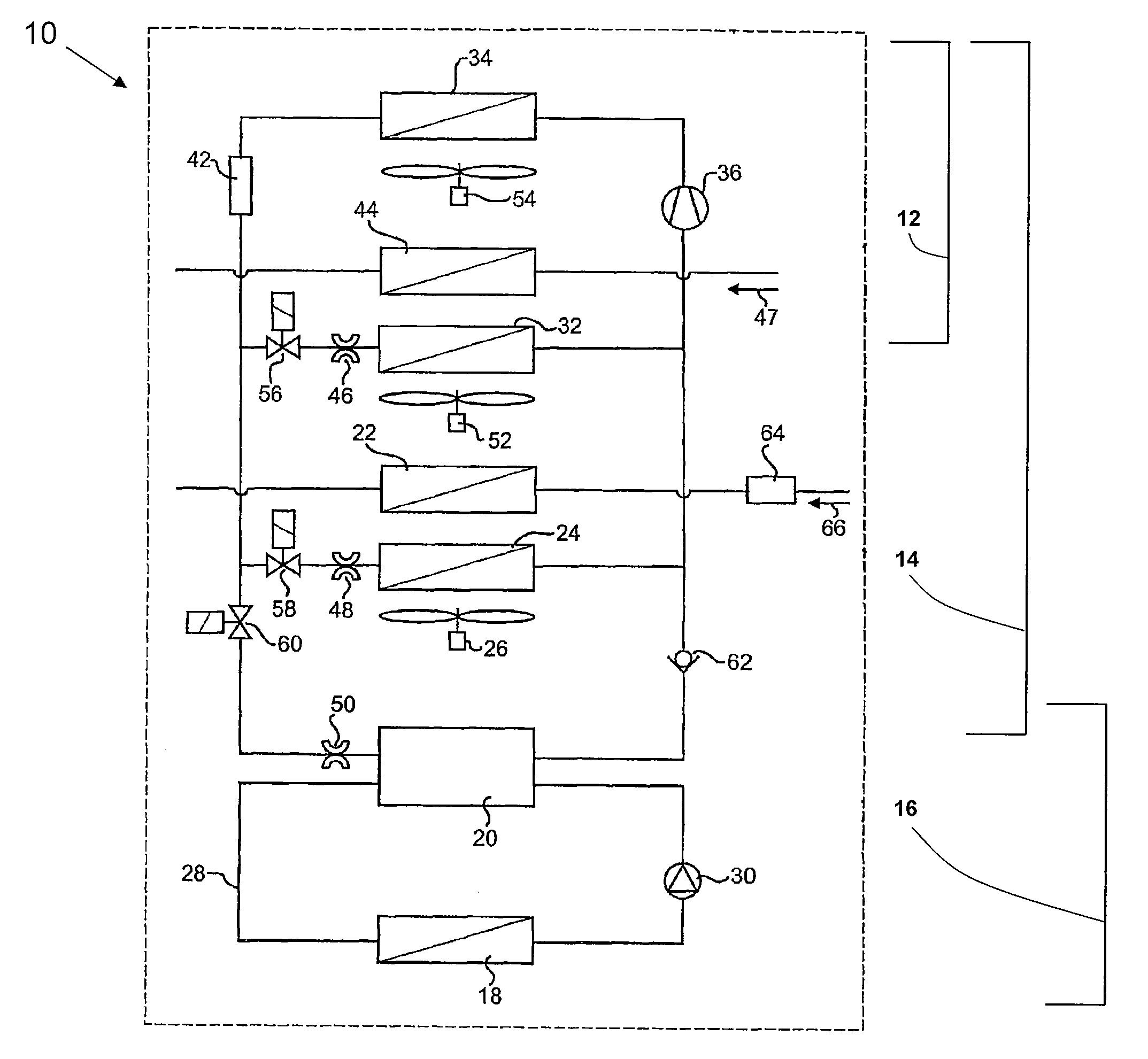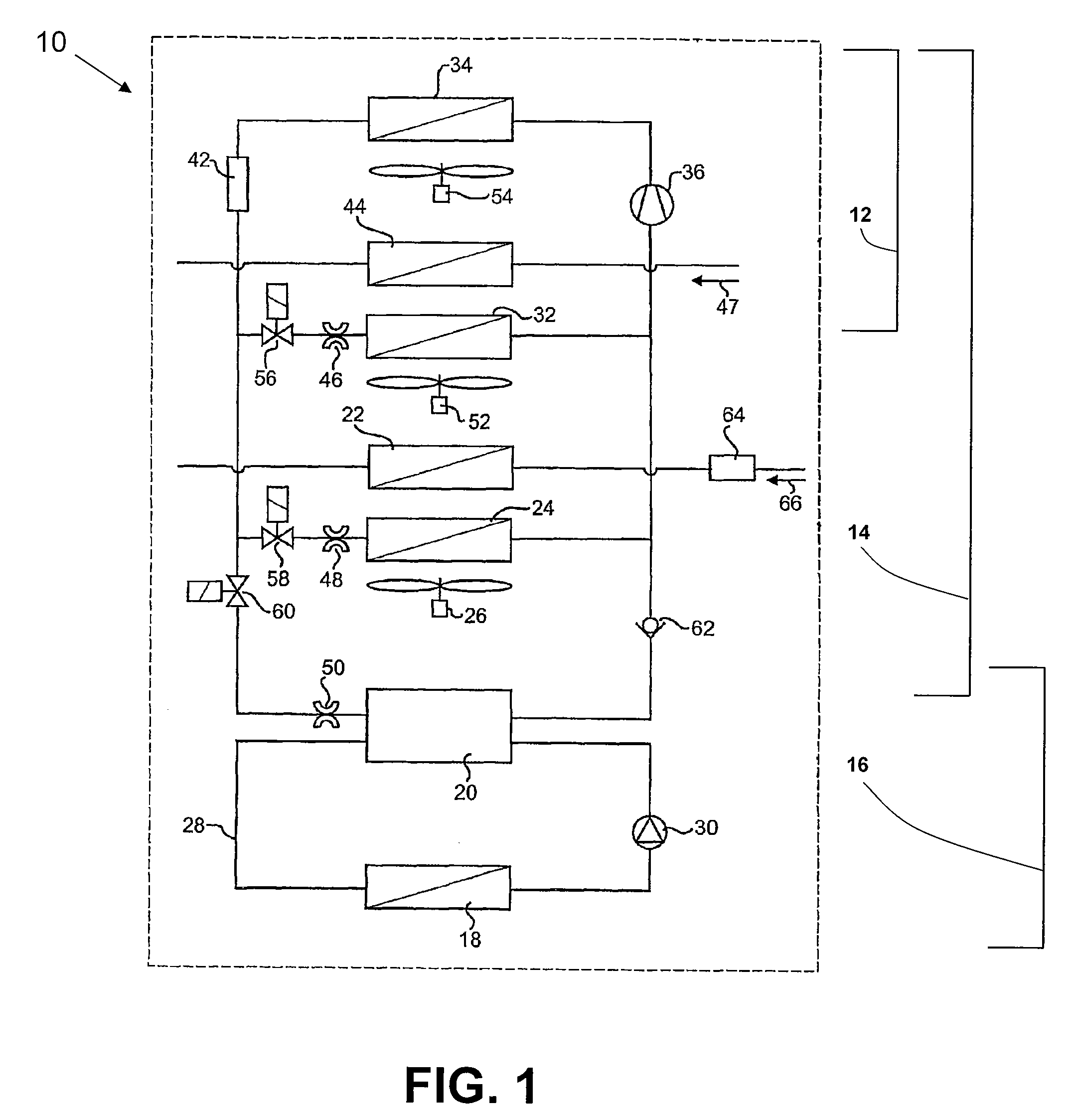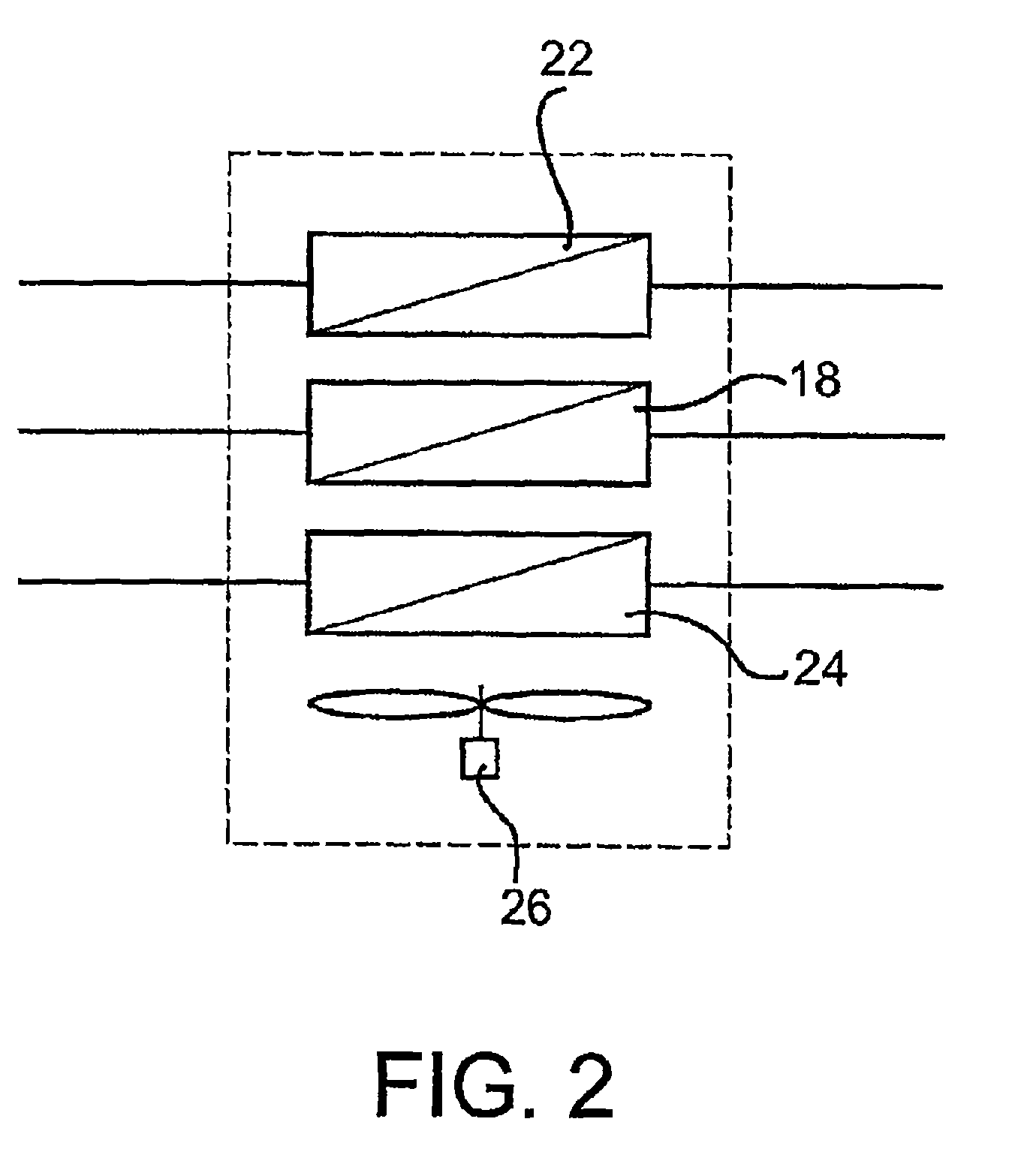Heating and air-conditioning system for a motor vehicle
a technology for air-conditioning systems and motor vehicles, which is applied in the direction of position/direction control, hand-manipulated computer devices, analog and hybrid computing, etc. it can solve the problems of high fuel consumption, excessive complexity, and wear and tear of the engine when the vehicle is driven, so as to reduce the load of the front system and achieve flexibility. , the effect of reducing the load
- Summary
- Abstract
- Description
- Claims
- Application Information
AI Technical Summary
Benefits of technology
Problems solved by technology
Method used
Image
Examples
Embodiment Construction
[0036]In the following detailed description of the preferred implementation format of the present invention, identical reference numerals (modulo 100) identify identical or similar components. It will be understood that those components in FIGS. 3-12 that are similar to components described in FIG. 1 are numbered the same except for the Figure number placed in front of the reference number. Thus, for example, common condenser 334 in FIGS. 3 and 434 in FIG. 4 both refer to a condenser similar and analogous to common condenser 34 in FIG. 1.
[0037]FIG. 1 shows a schematic diagram of a first implementation format of a heating and air-conditioning system according to the present invention. FIG. 2 shows two explanatory illustrations of possible geometric arrangements of components of the heating and air-conditioning system according to the present invention. The heating and air-conditioning system 10 comprises a front system 12, a rear system 14 and a stop-state system 16, wherein the ment...
PUM
 Login to View More
Login to View More Abstract
Description
Claims
Application Information
 Login to View More
Login to View More - R&D
- Intellectual Property
- Life Sciences
- Materials
- Tech Scout
- Unparalleled Data Quality
- Higher Quality Content
- 60% Fewer Hallucinations
Browse by: Latest US Patents, China's latest patents, Technical Efficacy Thesaurus, Application Domain, Technology Topic, Popular Technical Reports.
© 2025 PatSnap. All rights reserved.Legal|Privacy policy|Modern Slavery Act Transparency Statement|Sitemap|About US| Contact US: help@patsnap.com



